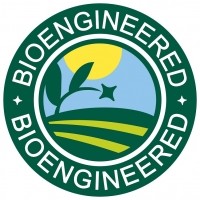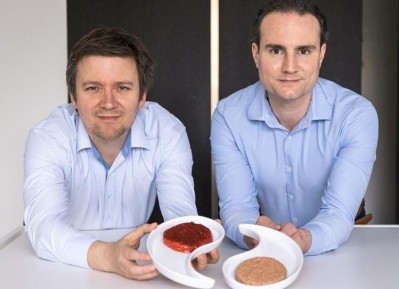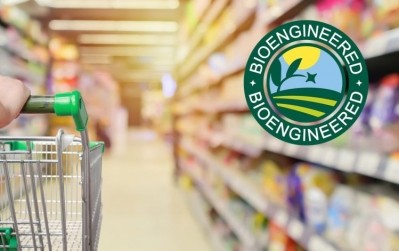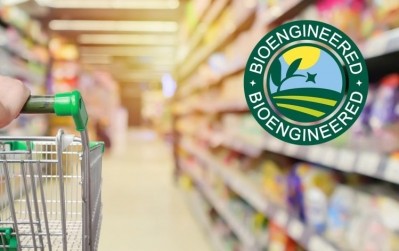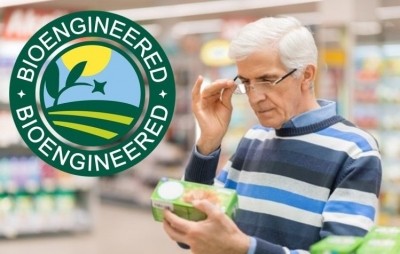SPECIAL REPORT: Bioengineered food labeling: ‘They kind of shot in the middle and missed every constituency’
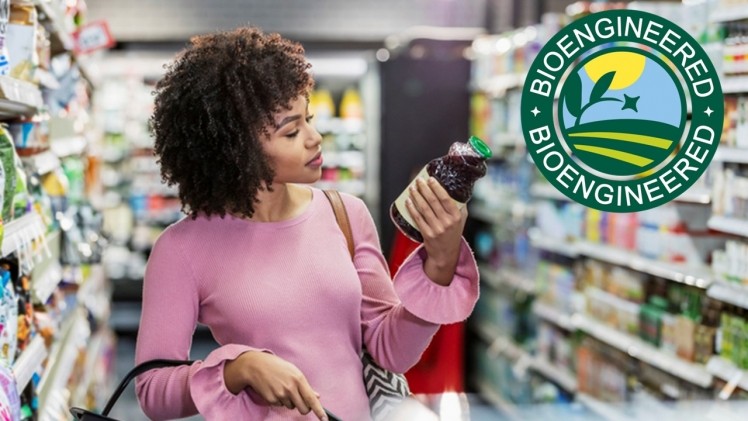
The National Bioengineered Food Disclosure Standard (NBFDS) – which narrowly defines bioengineered foods as those that “contain detectable genetic material that has been modified through certain lab techniques and cannot be created through conventional breeding or found in nature” – “kind of shot in the middle and missed every constituency," observes Nate Ensrud, VP, US technical services, certification, and food safety solutions at FoodChain ID, which helps firms to comply with the standard.
For some stakeholders in the natural foods industry, he says, it missed the mark, both in scope (the definition fails to capture thousands of products that have been produced with genetic engineering) and application (many objected to ‘bioengineered’ vs ‘GMO’ as the chosen terminology and the option to use digital disclosures on food labels).
For other stakeholders who believe slapping a blanket statement about bioengineering (which has thousands of different applications) on a jar of pasta sauce is about as useful as saying 'science was used to make this product," the NBFDS in its current form is just a costly bureaucratic headache without any obvious consumer benefit.
Narrow definition of 'bioengineered'
A major sticking point is the definition of ‘bioengineered,’ which excludes meat and dairy from animals fed GM feed, incidental additives, and highly refined oils and sweeteners made from GM crops such as soybean oil and high fructose corn syrup if they contain no detectable modified DNA.
Gene-edited foods, in turn, occupy something of a grey area. They may not contain detectable genetic material that has been modified through traditional rDNA techniques, but how easy is it for a third party to determine if gene-edited material meets the definition of “cannot be created through conventional breeding or found in nature?”
Back in the day, says Ensrud, “We were mostly talking about a series of crops that very obviously had genes inserted to express different traits.
"But since then, there’s been a substantial proliferation of gene-edited products, products made using synthetic biology and so on, and while the [alternative meat, egg, and dairy] movement used to be pretty aligned, this is not the case anymore [as anyone following the social media debate about whether 'biotech' companies should be allowed to exhibit at Natural Products Expo West can see].”
Synthetic biology, gene editing, and new forms genetic engineering
For example, under the NBFDS, firms deploying synthetic biology to re-tool the DNA of microbes to produce everything from flavors, sweeteners, and colors to ‘animal-free’ collagen, egg, or dairy proteins are not required to label their ingredients as 'bioengineered' if there is no detectable level of the genetically modified host micro-organism in the final product.
This means that milk, ice cream, or cream cheese containing Perfect Day’s ‘animal-free’ whey protein, which is expressed by a genetically engineered strain of fungi in a fermentation tank; or beverages containing Cargill’s EverSweet Reb M sweetener, made by GM baker’s yeast, will not trigger a bioengineered label, if no GM material is detectable in the final ingredient.
However, burgers containing Motif FoodWorks’ 'meaty' animal-free heme protein myoglobin – which is also made in a fermentation tank using a pichia pastoris yeast strain – probably will trigger a bioengineered disclosure under the NBFDS, as trace amounts of the host microbe may be in the final product, says the company.
But even for exactly the same ingredient - myoglobin - no two companies producing this via fermentation are necessarily subject to the same labeling requirements when it comes to bioengineered food, says Belgian startup Paleo, which has engineered a strain of pichia pastoris to express myoglobin in an extra-cellular fashion (it's secreted outside the cell).
This means it’s easier to separate myoglobin from the yeast cells during downstream processing and purification, such that Paleo's myoglobin would not trigger bioengineered labeling in the US and would not be subject to EU GMO regulations, argues co-founder Hermes Sanctorum.
"We’ve tested our heme proteins through PCR and there is no recombinant DNA whatsoever in our products.”
Enforcement: 'So far, we haven’t seen very many well-structured complaints that can help us say, ‘these are the areas that companies are going to challenge'
The difficulty for companies trying to navigate this minefield is that the NBFDS doesn't really talk much about microbes "or much less explain how you label them with the exception of something like certain probiotics where genetically engineered bacteria might be the end product itself [rather than a production platform for something else],” notes Ensrud.
To further complicate matters, he says: “Then there’s a really vague section of the of NBFDS that says if a company has ‘actual knowledge’ it’s using something bioengineered, ‘even if a food is not on the BE list,’ it is supposed to make a disclosure, which feels like a throwaway line, but how do you determine that?
He adds: “We don't know a lot about how this will be enforced because the USDA has been clear that they're not going to be proactively enforcing this, but will be reliant on complaints. And so far, we haven’t seen very many well-structured complaints that can help us say, ‘these are the areas that companies are going to challenge,’ and I don't know that it's going to be one of the first areas people think about because microbes are not included in the list of bioengineered foods.”
Enforcement: Just 7 complaints so far, says USDA
USDA's Agricultural Marketing Service (AMS) has so far received just seven complaints alleging violations of the standard, said a spokesperson.
"If anyone suspects a violation may have occurred, they can file a written complaint with the AMS administrator by mail or on the AMS website. The administrator determines whether reasonable grounds exist for an investigation of the complaint, and if so, may request records from the entity responsible for disclosure. Based on those records, AMS will make its findings available to the regulated entity and provide them with an opportunity for a hearing. After the hearing, or if a hearing was not requested, once AMS has finalized its findings, AMS will make public a summary of the results of the investigation."
AMS does not have the authority to issue a recall or impose civil penalties for violations of the standard. However, states may adopt identical requirements and impose remedies for violations of their standards, explained the spokesperson. "USDA is not aware that any state has acted to impose such remedies."
'The gap between the Non-GMO Project definition of what should be labeled as a GMO and the NBFDS is an ocean wide'
The detectability factor makes practical sense, argue many stakeholders: if there's no GMO actually in the food, why should you have to label it?
But for organizations such as the Non-GMO Project that take issue with genetic engineering in the food supply chain per se, whether there's actually any 'modified genetic material' left in soybean oil or a natural flavor is hardly the point, notes Ensrud.
“Their goal is to establish a GMO-free supply chain, and so the gap between their definition of what should be labeled GMO and the NBFDS is an ocean wide.”
Having said that, the Non-GMO Project has arguably gained traction as a result of all this confusion, given that foods without bioengineered labels are not necessarily Non-GMO given the narrow scope of the federal law, prompting shoppers that care about avoiding genetic engineering to seek out the butterfly logo while shopping if they want to be sure.
On-pack disclosure options
So what about disclosure options, which like everything else in the NBFDS, have generated a lot of controversy? The standard permits multiple options:
- On-pack text: 'Bioengineered food' or 'Contains a bioengineered food ingredient'
- USDA-approved symbol (pictured right)
- Electronic or digital link: 'Scan here for more food information' or 'Call xxxx for more food information'
- Text message disclosure: 'Text [command word] to [number] for bioengineered food information.'
- Voluntary disclosures: Foods that do not meet the definition of bioengineered but are derived from bioengineered food may be disclosed voluntarily using a 'derived from bioengineering' symbol or a phrase such as 'corn derived from a bioengineered source.'
Aspects of the digital disclosure options have just been successfully challenged in a lawsuit brought by the Center for Food Safety and others, with a court sending USDA back to the drawing board to make revisions consistent with Congressional requirements around consumer access.
So what does this mean for companies currently using the QR code or text message option? According to Ensrud, “We did see some companies choose to use the QR code, but not a large majority by any means. The ones that were choosing QR codes told us they liked the flexibility, as perhaps they were still trying to remove some bioengineered foods from their supply chain and would move from having to disclose to not having to disclose, which would require a change in labels, which can be costly and laborious.
“The opposite is also possible. If a company has to make an emergency shift from a non-GMO source to a GMO source for an ingredient [not that unusual given current supply chain volatility], it would likely change the labeling requirements. For companies that have less settled supply chains, this change in requirements could make things more difficult.”
Attorney: 'The QR code option is not going away'

Sam Jockel, a senior associate at law firm Alston & Bird, noted that “There is still an opportunity for either USDA or the plaintiffs in this case to appeal the ruling, which I am watching for.”
According to George Kimbrell, legal director at the Center for Food Safety, which filed the lawsuit challenging many aspects of the NBFDS, “The Court did not set a deadline, but under law agencies cannot unduly delay such action and must complete it in a reasonable time.”
Should the order ultimately stand, said Jockel, “it appears that USDA would have discretion in terms of timing as the court did not set any deadlines for USDA to conduct its post-remand proceedings.”
For those who think this means that the QR code will go away, added Jockel, “The statute passed by Congress requires an electronic/digital link disclosure as one of the options along with the text and symbol, so the QR code option is not going away.”
The Consumer Brands Association said it is still reviewing the court order, but added: "We plan to stay engaged during the forthcoming rulemaking and legal process, especially considering the potential impact on the companies using QR codes or texts. Consumer Brands will also continue supporting the valuable role digital disclosures play in boosting consumer transparency through programs like SmartLabel.”
'The scope of the products that require mandatory disclosure is actually subject to change'
Jockel also noted that the “scope of the products that require mandatory disclosure is actually subject to change.
“Companies will want to watch for any updates to the list of BE Foods as AMS is required to review and consider updates on an annual basis. As the judge’s order put it in reference to the agency’s regular updates to the List of BE Foods, ‘AMS did not ignore the likelihood of progress.’ As evidence of that, the agency is currently proposing to expand the list to include insect-resistant sugarcane.”
CSPI: NBFDS 'a step in the right direction in terms of transparency'

Greg Jaffe, biotechnology project director at the Center for Science in the Public Interest (CSPI), told us that an informal survey conducted in his local Giant grocery store earlier in the year found that “almost no companies use the symbol on the package” with most seeming to opt for the ‘bioengineered food’ or ‘contains a bioengineered food ingredient’ option, although several brands had adopted QR codes.
“My informal survey also found many foods disclose even though they probably only have highly refined ingredients, so companies are clearly erring on the side of giving more information to the consumer than might be required.”
So has the law helped consumers make informed choices? Or are blanket references to ‘bioengineered’ foods just wallpaper to busy shoppers?
“I think that the law has provided consumers who want to know this information, more information than they would receive without the law,” said Jaffe, who described it as “a step in the right direction in terms of transparency, in part because companies were not providing this information voluntarily anywhere for the consumer who wanted it.”
He added: “I don’t think many consumers look for this information or make purchasing choices based on it. With that said, for many consumers, knowing that there is transparency and information is available is important (i.e. knowing that information that some people might want is not hidden or inaccessible).”
Asked about the growing number of ingredients produced by genetically engineered microbes, he said: “Many ingredients made with engineered organisms also will not require disclosure, but I think it is important that those companies are transparent and provide information to consumers about the origin of the ingredients in their products, whether or not it has to be disclosed as ‘bioengineered.’
“Being transparent with consumers will build trust, educate consumers about the use of biotechnology in foods, and allow for consumer choice.”
Further reading:

